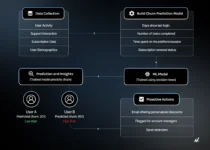The Future of Content Creation: This Article is Written by an AI Tool
In the rapidly evolving world of technology, artificial intelligence (AI) has made its presence known across various industries. Now, it’s made its way into content creation. This article, for instance, is written by an AI tool — ChatGPT, an advanced language model developed by OpenAI. By leveraging state-of-the-art techniques, AI-generated content transforms how we create and consume information.
What is ChatGPT?
ChatGPT is a product of OpenAI’s cutting-edge research based on the GPT-4 architecture. As an AI language model, it’s been trained on a vast dataset containing diverse content from the internet. This enables ChatGPT to generate contextually relevant and coherent text, making it a powerful tool for content creation across various domains.
How Does AI Writing Work?
AI writing tools like ChatGPT utilize machine learning algorithms to understand language patterns, grammar, and context. The process typically involves these three stages.
- Pre-training: The AI model is exposed to vast amounts of text data, learning the statistical properties of language and the relationships between words, phrases, and sentences.
- Fine-tuning: The model is fine-tuned on specific tasks or datasets to optimize performance and generate content relevant to user inputs.
- Text generation: The AI model takes a user prompt and uses the patterns it has learned to create contextually relevant content, maintaining coherence and structure throughout the text.
Why Should Companies & Writers Be Interested in AI?
AI-driven content creation gives users some distinct advantages.
- Efficiency: AI tools can generate content rapidly, saving time and resources for creators and businesses.
- Consistency: AI-generated content maintains a consistent tone, style, and quality, reducing the need for extensive editing.
- Customization: AI writing tools can be fine-tuned to cater to specific industries, topics, or writing styles, resulting in tailored content for unique requirements.
- Accessibility: With AI-generated content, creators can overcome writer’s block, language barriers, or other challenges, making content creation more accessible to a broader audience.
But It Still Falls Short…
While AI-generated content has shown us it has immense potential, it still has some limitations (for now).
- Ethical concerns: AI-generated content raises questions about authenticity, plagiarism, and accountability, proposing the need to develop new, more intense ethical guidelines.
- Lack of creativity and originality: Although AI tools can mimic human writing, they may need help producing genuinely original content, as they rely on patterns learned from existing data. In other words, if it doesn’t exist on the internet now, AI can’t create the next new original sub-genre of books (yet).
- Misinterpretation and bias: AI-generated content may unintentionally perpetuate biases based on the data from which it scrapes information. Additionally, it can misinterpret user prompts, leading to potentially inappropriate or offensive content.
- Brand inconsistency: Maintaining brand voice is vital for those who write various types of content for online companies. A luxury hotel brand won’t use the language you can find on a website for a Hello Kitty cafe. While you can specify the tone for an article in the user prompt on ChatGPT, it doesn’t catch everything. Sometimes an individual human voice is needed to keep the style consistent throughout.
So Where Does This Leave You?
AI-generated content represents a significant advancement in content creation. AI tools like ChatGPT can streamline the writing process, offer customization, and improve accessibility for diverse creators. However, addressing the ethical concerns, limitations, and potential biases inherent in AI-generated content is crucial to ensure innovative and responsible use in the coming years.


